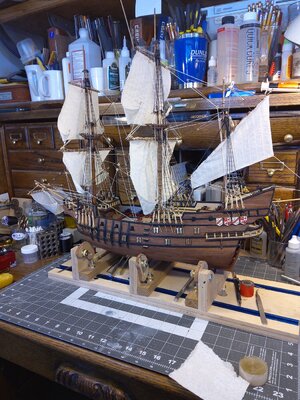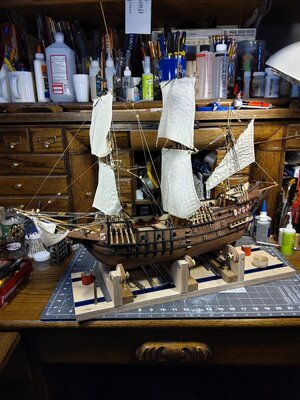I an almost ready to start the planking on the Donald David lobster boat and I an wondering how to make sure that the steamed planks are properly glued. I am worried that the wetted planks won't glue securely. Any suggestions are greatly appreciated. The planks are made of Western Ted Cedar and the keel & frames are white oak.
Happy Modeling.
Steven
Happy Modeling.
Steven









